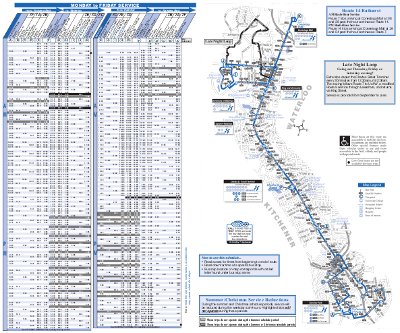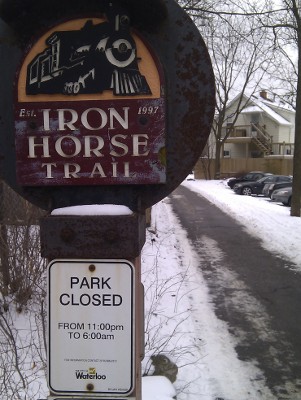Untangling the Route 7 Mainline: Understandable Transit
Our transit network’s most frequent service should be something we can take pride in. Unfortunately, the “mainline” Route 7 is an absolute mess. It has three branches in the north end, three branches in the south end, a long layover right in the middle, problems with bus bunching, and a schedule that can confound even the seasoned transit user — to say nothing of those who need convincing to take transit. On essentially the same corridor, we also have a rapid service, but which is not as frequent. A rethinking is in order.
We propose that iXpress frequencies be increased, that Route 7 be consolidated into a single trunk route on King Street, and that the north end branches be split off into a local circulator — a University Loop route. This would preserve current utility, while vastly simplifying the GRT network and making it far more appealing to existing and new riders. It’s one of those cases where transferring (at University or Columbia) is good for you and good for your city. According to our back-of-the-envelope calculations on the basis of available schedule information, the redesign could be accomplished through re-allocating existing resources available after this year’s GRT improvements.
More specifically, our proposal would mean: 8 minute headways (time between buses) on the iXpress, 10 minute headways on a consolidated Route 7 on King Street, and 8-10 minute headways on both directions of a University Loop route. Each one of those would be a simple, understandable, frequent-service route. Importantly, the iXpress would take its rightful place as the most frequent service, and thereby start building up the ridership patterns for Rapid Transit service that will replace it.
If you would like to see this happen, make sure to send your comments in to Grand River Transit planners along with your other thoughts on this year’s service changes. Staff have told us that they’ve received few complaints about the complexity of Route 7 — which is the elephant in the room. Let them know what you think.
The rest of this post describes the redesign and why it will work.


